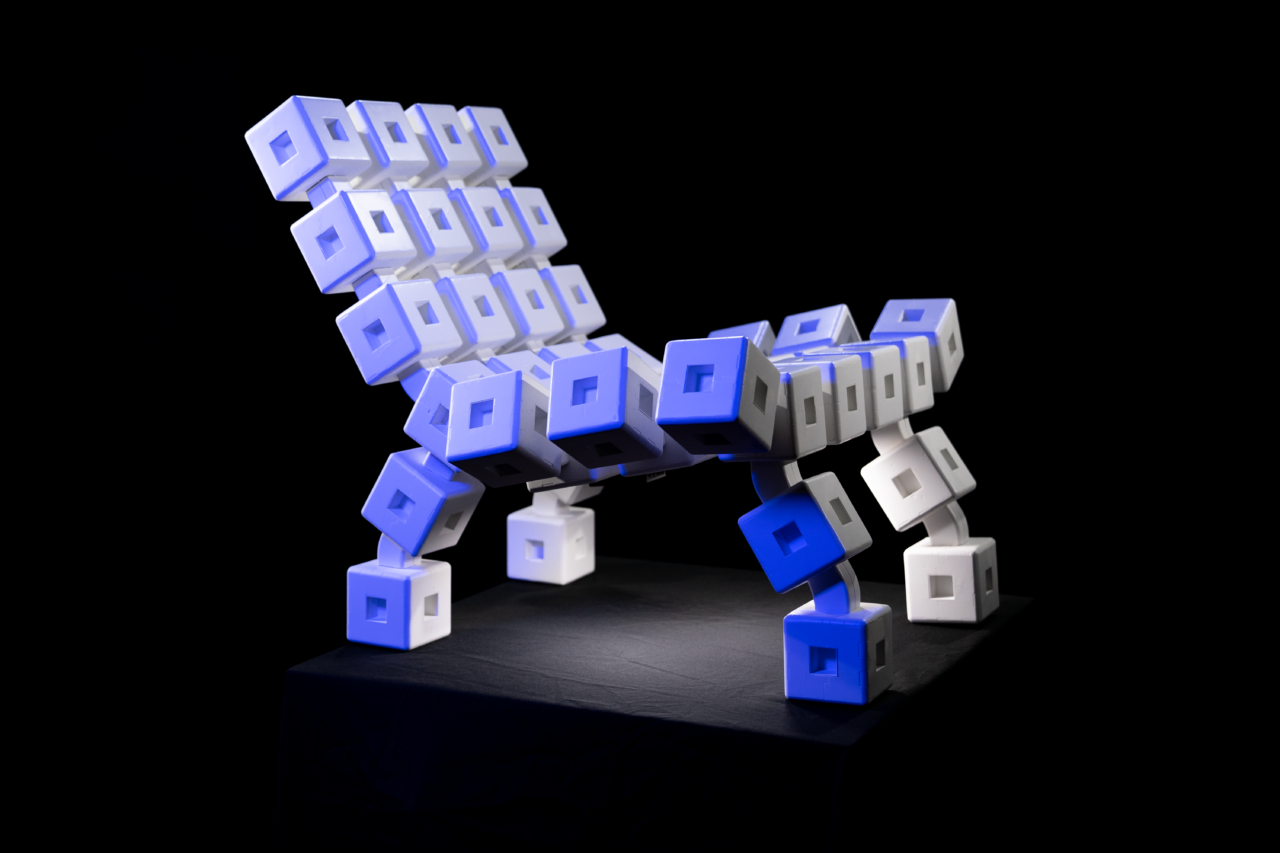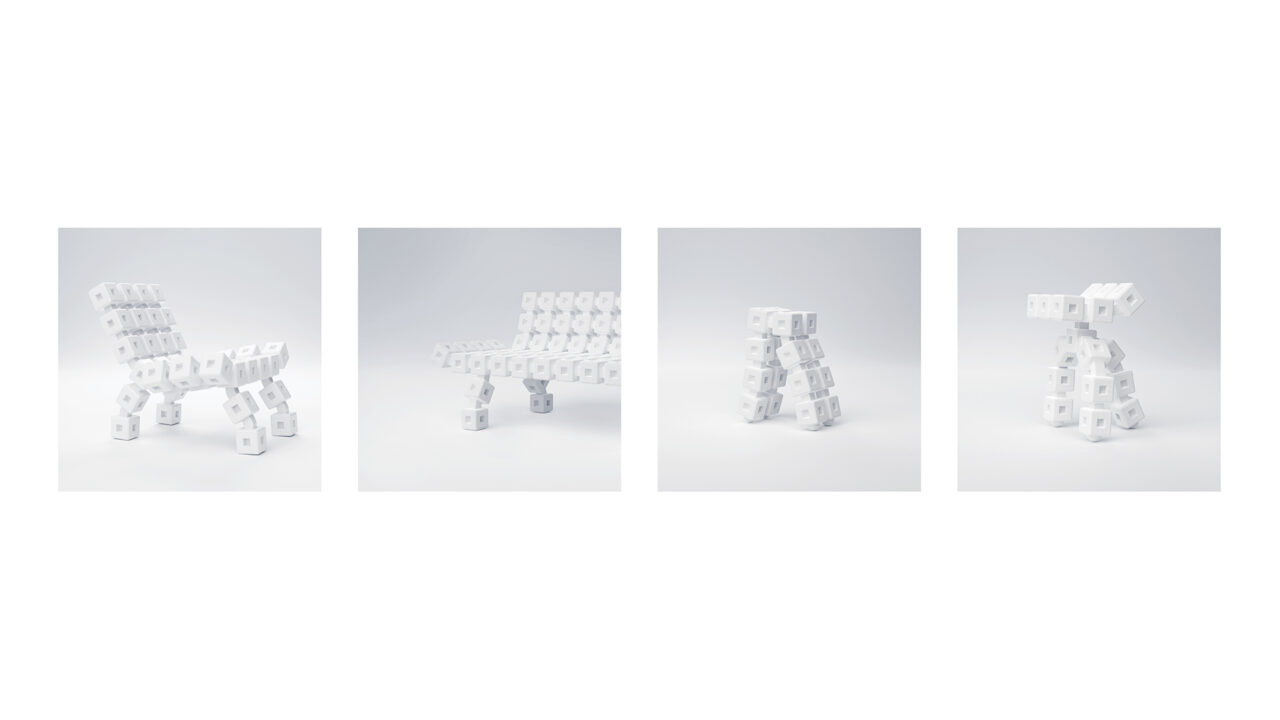Unito: Products made from CO2
Feb 2021 - ongoing
By: Bessai, Riel
October 16, 2021

Carbon dioxide utilisation in design
What can designers do about CO2 already present in the atmosphere? The Intergovernmental Panel on Climate Change predicts we must actively sequester 100 gigatons of the greenhouse gas by the end of the century to meet our global warming target of 1.5 ˚C. One gigaton is about twice the mass of all the people in the world. To achieve this, we must consider a wide variety of technical approaches to carbon sequestration and storage¹.
Unito explores the concept of carbon dioxide utilization, which considers CO2 as a feedstock to produce materials. These materials are defined as “carbon-negative”, as they take up a larger quantity of carbon during their production process compared to the carbon released during production (for energy use, for example). Consequently, using these materials in products leads to removal of CO2 from the atmosphere and its storage inside the built environment. With this approach, the Technosphere – the part of the environment that is made or modified by humans – becomes transformed into an artificial carbon sink.
¹Carbon sequestration means capturing carbon dioxide from the atmosphere and storing it in different carbon sinks. This can be naturally, in plants (biosphere), or artificially in the ground or in different geological or artificial sinks.

The approach of utilizing carbon-negative materials leads us to consider product design in a new light. Besides fulfilling a given functionality, products also act in a secondary capacity to store carbon. This leads to several additional design drivers that must be considered:
- The product should act to maximize carbon storage while maintaining the principal product functionality. This means optimizing designs for mass-storage where possible.
- The product lifespan must consider appropriate carbon storage timeframes. This means designing for product life on the order of centuries or even millennia.
- The product end-of-life must not reemit CO2 back to the atmosphere. This means avoiding incineration and decomposition.
The Unito concept
Unito is a modular system architecture that can be used to build functional objects which store CO2. It consists of units built from carbon-negative bio-HDPE, a type of bioplastic. Each unit contains 1kg of organic carbon which is derived from 3kg of atmospheric CO2. The units are joined together by a family of connectors to create products. Several furniture pieces have been developed using the system architecture.
Unito is designed for longevity. The units are designed to store carbon for hundreds of years, while the assembled objects can be disassembled and reconfigured to address unanticipated user needs. Ultimately, the biopolymer can be recycled or stored in geological sinks.

Impacts of the Unito project
This speculative concept is meant to spark conversation about a world built from atmospheric CO2 at scale, how designers can address the climate crisis, and the how we might reimagine our built world to double as carbon storage.
Interested in learning more?
Check out Riel’s exhibit at the 2021 Dutch Design Week
You can also find his thesis here.
Riel Bessai
Integrated Product Design
Graduation date: July 19, 2021
Masters Graduation Project Supervisors
Ruud Balkenende
Erik Jepma